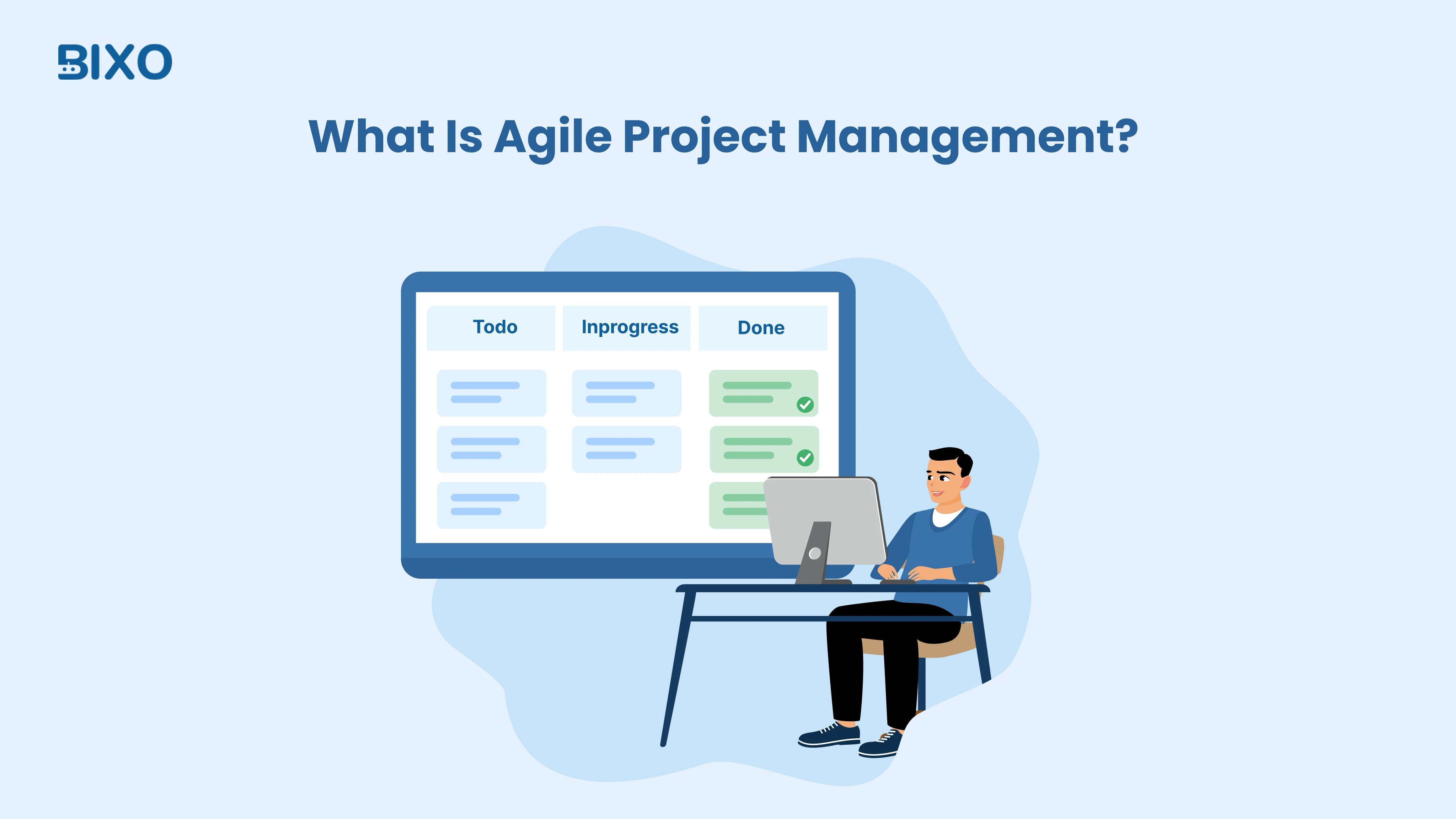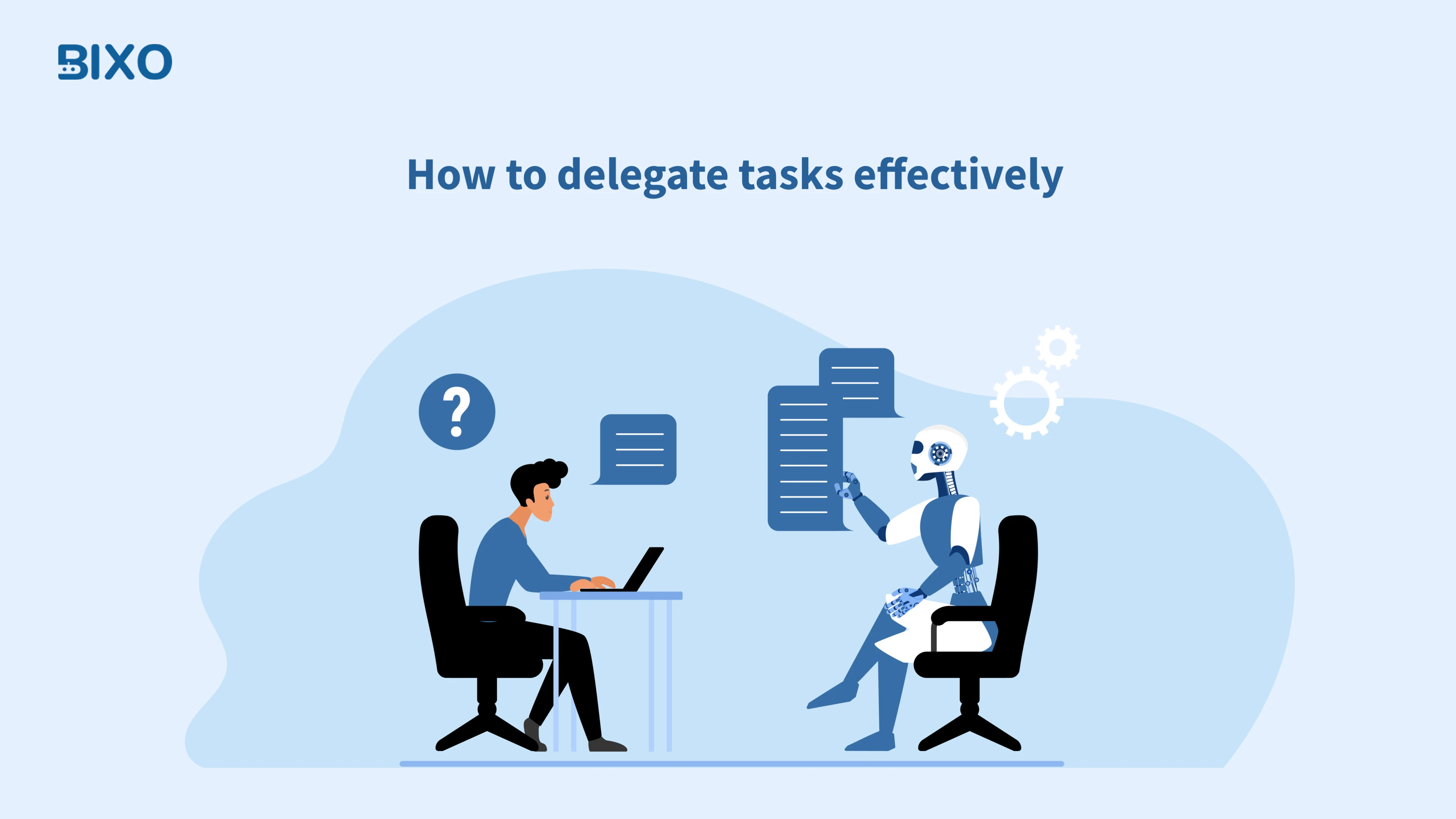 Tarun Kumar Reddy Atmakuru |
Tarun Kumar Reddy Atmakuru |
 Nov 7, 2025
Nov 7, 2025

Table of Content
Focus on what matters. BIXO handles the rest!

Agile project management helps you deal with changes without losing track. It lets you adjust plans, work better with your team, and get results faster. Instead of following strict timelines or fixed methods, you stay flexible, check progress often, and act on feedback quickly. In this way, your team works together smoothly, and your goals stay clear even when things change.
In this blog, you will get to know how agile project management works, what its core ideas are, why it’s useful, and how agile tools can help you manage projects better and faster.
What is the Brief History of Agile Project Management?
Agile project management started because teams were tired of slow processes that could not keep up with real needs. With traditional methods, you had to plan everything at the start and just hope it would work out later. Most of the time, it didn’t. So, in the early 2000s, a group of practitioners came together and shaped the Agile Manifesto. Their goal was clear. Focus on the people doing the work, communicate openly, and deliver useful results in smaller steps instead of waiting for one big launch.
From there, agile project management started becoming the way many teams preferred to work. You break work into short phases, listen to feedback as you go, and adjust before problems grow. It has become the go to approach for projects where change is normal and speed matters. The result is simple. You stay closer to what users want and avoid wasting time on work that no longer fits the goal.
What Is Agile Project Management?
Agile project management is about keeping your projects flexible and focused on what is really important. Instead of planning everything at the start and hoping it works out, you break work into smaller phases, check progress often, and make changes as you go. This way, you can handle changes easily, fix problems early, and deliver results that actually matter.
With the agile project management methodology, you can divide work into manageable steps and use agile management tools to stay on track. You can also make sure everyone on the team knows what’s happening. The core values of agile assist you in working together, setting priorities, and focusing on the most important tasks.
How Does Agile Project Management Work?
Agile project management works by assisting you in keeping your projects flexible, focused on what is really important, and ready to adapt to change. You break work into small, manageable pieces, gather feedback often, and adjust continuously as the project moves forward. Here is how it unfolds step by step.

Planning in Small Phases
With agile project management, you do not try to plan everything at once. Instead, you break work into small phases, decide what is most important, and focus on getting results quickly. Each step lets you adapt if things change and keeps you moving steadily toward your goal.
Continuous Feedback and Improvement
One key part of the agile project management methodology is gathering feedback regularly. You review progress frequently, listen to what’s working and what isn’t, and adjust before problems grow. This lets you improve continuously and keeps the work aligned with real needs.
Delivering Value Incrementally
With agile project management, you don’t have to wait until the end to see results. Work is delivered in small, useful pieces, so every phase gives you something tangible. This lets you and your team track progress, get feedback quickly, and make improvements as you go. It helps you meet real needs faster and keeps the project moving in the right direction.
Adapting to Change
In any project, things will change, and agile project management is built for that. You shift priorities, adjust resources, and tweak tasks as new information comes up. By taking small steps and staying flexible, you keep the project on track and make sure it meets the goals that actually matter.
Collaboration and Communication
Agile runs on teamwork. You talk often, share what is happening, and handle problems together before they slow things down. When everyone understands the plan and what needs to happen next, the whole team moves forward with clarity and confidence.
What Are the 4 Core Values of Agile?
The four core values of agile are the heart of agile project management. They show you how to plan, work, and collaborate in a way that keeps your team flexible, focused, and getting real results. Here’s what they look like in action:
Individuals and Interactions Over Processes and Tools
Agile starts with a simple belief that people matter the most. It’s about being open, helping each other, and getting work done together. Tools are useful, but what really matters is how well the team works as a group.
Working Solutions Over Comprehensive Documentation
Getting things done is more important than creating long documents in agile. You focus on delivering practical solutions in each phase instead of getting stuck in paperwork. This way, you keep things moving, get feedback faster, and make sure every step adds real value.
Customer Collaboration Over Contract Negotiation
In agile, it’s all about working closely with the people who will actually use your work. Instead of just sticking to contracts, you stay open to their feedback and adjust as things change. This way, you deliver results that really meet their needs and stay on track with what matters in the real world.
Responding to Change Over Following a Plan
Plans are important, but things do not always go as expected. In agile, you embrace change instead of sticking rigidly to a plan. You adjust as new data comes in, take things one step at a time, and solve problems as early as possible. This keeps the project flexible, reduces risk, and ensures you are always working toward what is really important.
What Are the Benefits of Agile Project Management?
Agile project management helps you stay on top of shifting priorities without losing direction. It keeps your team focused, moves projects forward faster, and makes it easier to deliver real results that matter. Here’s a look at the key benefits you’ll see when you start using the agile project management methodology in your work.

Faster Delivery and Early Results
With agile project management, you don’t have to wait months to see something take shape. You break the project into smaller pieces, get things done step by step, and see real progress early on. Each phase gives you a chance to test ideas, gather feedback, and make quick improvements. It keeps the work moving, builds confidence in your team, and shows everyone that progress is happening right now, not someday.
Greater Flexibility and Adaptability
Let’s be honest, plans never stay the same for long. Something always changes along the way. That’s where agile project management makes a real difference. It lets you adapt without the stress. You can shift priorities, move things around, and keep your team focused on what actually matters right now. Instead of fighting change, you work with it, and that’s what keeps everything running smoothly.
Improved Collaboration and Communication
Everyone knows what’s happening and what to focus on next. This open communication helps prevent misunderstandings, makes decisions faster, and keeps the whole project moving smoothly. Agile tools make this easier by keeping everyone informed.
Higher Quality Outcomes
Since you inspect the work frequently in each iteration of agile project management, you are able to notice problems early in their development and correct them before they grow into big ones. Regular testing and feedback make the final product better and help prevent having to do earlier work again, which can be expensive and time-consuming. The results are a better, more dependable product that meets the needs of the user, rather than the assumptions of users made six months ago.
Better Visibility and Control
Agile project management gives you a clear view of what is happening at every stage. You can see what’s done, what is still in progress, and where things might be slowing down. With agile management tools, it is easy to track the details without losing sight of the bigger picture. That kind of visibility assists you in making quick, smart decisions, managing your time and resources better, and keeping the project under control from start to finish.
Stronger Customer Satisfaction
In agile project management, the focus is on customer collaboration rather than finite contracts. By involving the customers and/or stakeholders throughout the entire process, you ensure that the final product meets their goals. Regular loops of feedback and continuous delivery create trustworthiness and cause greater satisfaction, because people can see the improvements and the value of what they are involved in much earlier on.
Continuous Improvement
Agility is not just concerned with project management. It is also creating an environment for learning. After each iteration, examine what worked, what didn’t, and how the team can do better next time. Looking back like this helps the team keep learning and improving, so each project gets better than the previous.
What Are the Common Challenges in Agile Project Management?
Agile project management helps you move faster, stay flexible, and deliver better results, but it’s not always easy. Getting used to this way of working takes time and practice. Let’s break down some common challenges you might run into and how you can handle them effectively.
Lack of Understanding of Agile Principles
One of the main challenges in agile project management is when the team doesn’t really get how agile works. It’s not just about daily meetings or using a task board. It’s a whole way of thinking about work. Agile is about collaborating, adapting quickly, and delivering real value in small steps. If people treat it like just another process, the results won’t be great. Make sure everyone understands why Agile matters, not just how to follow it.
Resistance to Change
Moving from traditional project management to agile can feel strange at first. People are used to having set plans and clear roles, so breaking work into small steps and changing things frequently can feel confusing at first. You might notice some pushback when old habits meet agile practices. The best way to handle this is by showing quick wins, small improvements that prove agile makes work easier and more effective for everyone. Over time, these results speak louder than any explanation.
Poor Communication and Collaboration
Agile project management only works when communication is clear and consistent. If updates are missed or feedback doesn’t reach the right people, the workflow can quickly get interrupted. Agile teams move fast, so even small miscommunications can cause delays. Using Agile management tools to keep track of updates and having short daily check-ins helps everyone understand what’s happening. Open and honest communication is what keeps the team working smoothly.
Higher Quality and Early Problem Detection
Models of the Agile framework require discipline. You keep on refining, testing early and changing plans. When you are unfamiliar with what Agile project methodology is or are not so skilled with technology, you can derail quickly. The team might fail to apply agile principles correctly and end up slowing down instead of speeding up without the right guidance.
Greater Control and Predictability
Agile system considers working features more important than extensive paperwork. Although this accelerates delivery, it may introduce knowledge gaps. Additional staff or subsequent phases of a project might find this difficult since key information was not recorded. In the absence of records, maintenance over the long term may be challenging.
Continuous Improvement and Learning
Agility is not just concerned with project management. It is also creating an environment for learning. After each iteration, examine what worked, what didn’t, and how the team can do better next time. Looking back like this helps the team keep learning and improving, so each project gets better than the previous.
Inconsistent Stakeholder Involvement
Agile works best when stakeholders are actively involved, but that’s not always easy. When they don’t stay engaged, feedback comes late, and the project can go off track. You need regular input from the people who will actually use or benefit from the project. Keep them part of reviews, updates, and planning sessions so decisions are based on real needs, not guesses.
Difficulty in Measuring Progress
In traditional project management, progress is usually measured with milestones and long reports. Agile works differently. You track real work and feedback from each step. If you’re new to Agile, this can feel confusing. Instead of waiting for a big milestone, focus on smaller deliverables from each sprint and see how well they meet the goals. Agile tools make it easier to follow progress without getting bogged down in heavy reporting.
How BIXO Improve Team Productivity in Agile Projects?
Keeping Agile projects on track can feel like a juggling act, chasing updates, tracking deadlines, and managing multiple people at once. BIXO takes that weight off your shoulders. Once tasks are set, it automatically checks in with your team, tracks progress, and gives you a clear summary. You don’t have to worry about missed deadlines or forgotten updates. BIXO keeps things moving so you can focus on planning, supporting your team, and getting results that actually matter.
With BIXO, managing even large teams becomes much easier. It notices tasks that depend on each other, points out problems when they come up, and keeps you updated in real time without constant follow-ups. With BIXO, you can see clearly what’s going on, your team feels supported, and productivity improves naturally. You can focus on planning and guiding the team while everyone stays on track.
Conclusion
Agile project management helps you stay flexible, focused, and keep on track with the important things. By breaking work into small steps, tracking progress with agile tools, and paying attention to feedback, you can get results faster, work better with your team, and handle changes easily. Clear communication, learning from each step, and small wins along the way give you more control, better visibility, and higher satisfaction while keeping projects running smoothly and achieving real results.
FAQs
Teams use agile by dividing work into small, manageable parts, checking in often, and adjusting plans based on feedback. It keeps everyone flexible, spots problems early, and helps deliver useful results faster and more consistently.
Project management tools like BIXO help you organise tasks, track progress, and keep communication clear. They make teamwork smoother, improve visibility, and ensure everyone stays focused on the same goals throughout the project.
Scrum breaks work into short, planned sprints with set roles and regular meetings to track progress. Kanban, on the other hand, focuses on a visual flow of tasks and steady, ongoing delivery. Both follow agile principles. Scrum offers more structure, while Kanban gives more flexibility.
Agile helps teams work smarter by focusing on collaboration, openness, and regular feedback. Instead of chasing big goals all at once, teams break work into smaller steps, track progress often, and adjust quickly, keeping things efficient and results improving with every cycle.
Get a demo of BIXO
Recommended Blogs

How to Delegate Tasks Effectively: 7 Tips for Managers
Learn how to delegate tasks effectively, save time, and boost team productivity with step-by-step tips, real examples, and smart AI tools.
 Bhuvana Bitra |
Bhuvana Bitra |
 Oct 17, 2025
Oct 17, 2025

Project Objectives: A Simple Guide with Real Life Examples
Learn how to set clear project objectives that guide your team, track progress, and ensure success. Get practical tips and real-life examples to get started right.
 Tarun Kumar Reddy Atmakuru |
Tarun Kumar Reddy Atmakuru |
 Oct 17, 2025
Oct 17, 2025

25 Key Project Management Skills Every Manager Should Master
Learn 25 essential project management skills - soft, hard, and technical to manage teams, meet deadlines, and deliver successful projects.
 Tarun Kumar Reddy Atmakuru |
Tarun Kumar Reddy Atmakuru |
 Oct 17, 2025
Oct 17, 2025
